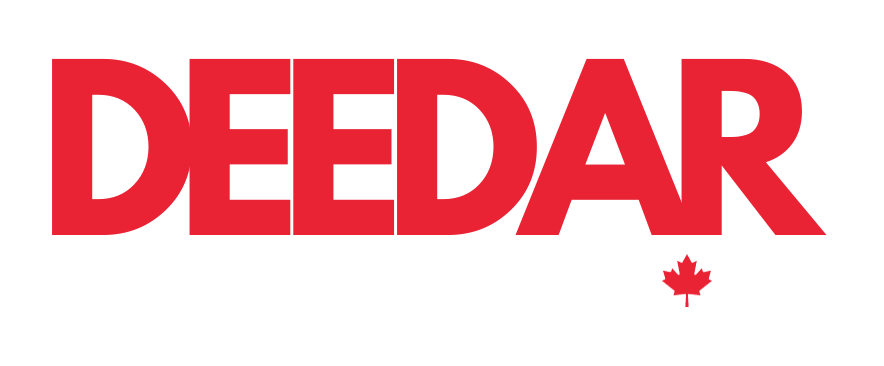The Landing Page design of a website plays a crucial role in attracting and engaging visitors. In this article, You can learn about the importance of designing of landing page and how landing pages are different from home pages and other pages. It is the first page that users encounter when they click on a link or an advertisement, making it the gateway to the rest of your website. The importance of a well-designed landing page cannot be overstated, and here are some reasons why:
- First Impression: A landing page creates the initial impression of your website and business. It sets the tone and establishes your brand image. A visually appealing and professionally designed landing page can significantly impact how users perceive your website and its credibility.
- User Engagement: A well-optimized landing page is designed to capture users’ attention and encourage them to take action. It should have clear and compelling content, a strong call-to-action (CTA), and intuitive navigation. By guiding visitors through a seamless experience, a landing page can increase user engagement and encourage them to explore further.
- Conversion Opportunities: The primary goal of a landing page is often to convert visitors into customers or leads. Whether it’s signing up for a newsletter, making a purchase, or requesting a demo, a landing page should be optimized to drive conversions. It should provide the necessary information, highlight key benefits, and offer a seamless conversion process.
- Targeted Messaging: Landing pages are often used in conjunction with specific marketing campaigns or promotions. They allow you to tailor your message and offer to a specific audience segment, ensuring that the content resonates with their needs and interests. By aligning the landing page with your marketing campaign, you can enhance its effectiveness and drive higher conversion rates.
- SEO and Ad Campaigns: Landing pages play a crucial role in search engine optimization (SEO) and paid advertising campaigns. A well-optimized landing page can help improve your website’s search engine rankings and quality score for ad campaigns. By incorporating relevant keywords, optimizing meta tags, and providing valuable content, you can increase visibility and attract targeted traffic.
- Data Collection and Analysis: Landing pages are excellent tools for gathering valuable user data and insights. By implementing web analytics and conversion tracking, you can measure the performance of your landing page, track user behavior, and make data-driven decisions for optimization. This information can help you refine your marketing strategies, improve user experience, and increase conversions.
In summary, the landing page of a website is crucial for making a positive first impression, engaging users, driving conversions, and supporting marketing efforts. By investing in a well-designed and optimized landing page, you can enhance your website’s performance, attract more visitors, and achieve your business goals.
Landing Page Design
Designing a landing page involves several important elements that help create an engaging and effective user experience. Here are some key considerations and tips for designing a successful landing page:
- Clear and Compelling Headline: Grab the visitor’s attention with a concise and impactful headline that clearly communicates the value proposition or main message of your product or service.
- Concise and Persuasive Copy: Use concise and persuasive copy to highlight the benefits and key features of your offering. Keep the text focused and easy to read, avoiding jargon or excessive technical details.
- Call-to-Action (CTA): Place a prominent and visually appealing CTA button on your landing page to encourage visitors to take the desired action, such as signing up, purchasing, or contacting you. Make the CTA stand out using color contrast and clear wording.
- Visuals and Imagery: Use high-quality images, videos, or graphics that are relevant to your product or service. Visuals can help create a positive impression and convey your message more effectively. Ensure that the visuals are optimized for fast loading times.
- Consistent Branding: Maintain a consistent look and feel with your brand identity, including colors, fonts, and overall design aesthetics. This helps reinforce your brand and builds trust with visitors.
- Social Proof: Display testimonials, reviews, or case studies from satisfied customers to establish credibility and trustworthiness. Social proof can be a powerful motivator for visitors to take action.
- Mobile-Friendly Design: With the increasing use of mobile devices, it’s essential to optimize your landing page for mobile responsiveness. Ensure that the design is responsive and adapts well to different screen sizes and orientations.
- Simple and Intuitive Navigation: Keep the navigation on your landing page simple and intuitive, with clear links or menus to relevant sections. Minimize distractions and avoid overwhelming visitors with too many options.
- Minimalist Design: A clean and uncluttered design tends to work well for landing pages. Use ample white space, focus on essential elements, and remove any unnecessary distractions that may divert attention from the main message or CTA.
- A/B Testing: Continuously test different elements of your landing page, such as headlines, visuals, CTAs, or layouts, to optimize its performance. A/B testing allows you to make data-driven decisions and improve conversion rates.
Remember, these tips are general guidelines, and the specific design choices should be based on your target audience, industry, and goals. Always prioritize usability, simplicity, and a clear value proposition when creating your landing page design.
Difference between a Landing page and the home page?
A landing page and a homepage serve different purposes and have distinct characteristics. Here are the key differences between the two:
- Objective: The primary objective of a landing page is to prompt a specific action from the visitor, such as making a purchase, filling out a form, or signing up for a service. On the other hand, a homepage aims to provide an overview of the website’s offerings and guide visitors to explore different sections or pages.
- Focus: A landing page is highly focused on a single offer, promotion, or call-to-action. It is designed to eliminate distractions and keep the visitor’s attention centered on the intended action. In contrast, a homepage typically presents a broader range of information and navigational options to give visitors an overview of the website’s content.
- Content: Landing pages have concise and persuasive content that highlights the benefits of the specific offer or action. They often include elements like compelling headlines, engaging visuals, and a clear call to action. Homepages, on the other hand, provide more detailed content about the company, and its products/services, and may include sections like About Us, testimonials, featured content, and navigation menus.
- Navigation: Landing pages usually have limited or no navigation menu to prevent visitors from straying away from the intended action. By removing navigation links, the focus remains solely on the desired conversion. Homepages typically have a comprehensive navigation menu that allows visitors to explore different sections of the website.
- Design: Landing pages are often designed with a singular goal in mind, utilizing elements like contrasting colors, compelling visuals, and clear CTA buttons to draw attention and encourage conversions. Homepages, on the other hand, may have a more elaborate design with a balanced layout, showcasing various aspects of the website and its content.
- Traffic Source: Landing pages are commonly used in targeted marketing campaigns where visitors arrive from specific sources like advertisements, email marketing, or social media. They are optimized to align with the campaign message and ensure a seamless user experience. Homepages, however, serve as the main entry point for organic traffic from search engines and direct visitors.
In summary, while a homepage provides a comprehensive overview of a website’s content and acts as a hub for exploration, a landing page is designed to capture leads or drive specific actions by focusing on a single offer or call-to-action. The landing page’s focused nature, minimal distractions, and persuasive elements make it distinct from the more comprehensive and navigational aspects of a homepage.
How Landing Page is Different from Other Pages
A landing page is specifically designed with a clear and focused objective in mind, usually to capture leads or encourage a specific action from the visitor. Here are a few ways in which a landing page is different from other types of web pages:
- Single Objective: Unlike a homepage or a general website page that may have multiple purposes, a landing page has a singular objective. It is designed to direct the visitor’s attention to a specific offer, promotion, or call-to-action, encouraging them to take a desired action.
- Minimal Distractions: Landing pages are typically stripped of any unnecessary elements or distractions that could divert the visitor’s attention away from the main objective. They have minimal navigation links, no sidebar, and limited or no footer information to keep the focus solely on the desired action.
- Concise and Direct Messaging: Landing pages employ concise and compelling messaging to clearly communicate the value proposition of the offer or action being promoted. They use persuasive language, bullet points, and visual elements to quickly convey the benefits and capture the visitor’s interest.
- Lead Capture Forms: Landing pages often include lead capture forms or opt-in boxes where visitors can provide their contact information in exchange for access to exclusive content, discounts, or other valuable resources. These forms help convert visitors into leads, enabling businesses to follow up and nurture the relationship.
- A/B Testing and Optimization: Landing pages are extensively tested and optimized to improve their conversion rates. Businesses often run A/B tests by creating multiple versions of the landing page with slight variations in design, copy, or elements to determine which version performs better and generates more conversions.
- Tracking and Analytics: Landing pages are closely monitored using web analytics tools to measure their effectiveness. Metrics such as conversion rates, bounce rates, and engagement levels are tracked to assess the performance of the landing page and make data-driven improvements.
Overall, landing pages are purpose-built to drive specific actions from visitors and achieve measurable results. Their focused nature and emphasis on conversion optimization make them distinct from other pages on a website.
Conclusion
In conclusion, a landing page and a homepage have distinct purposes and characteristics. A landing page is a focused, standalone web page created to drive specific actions from visitors, such as making a purchase or filling out a form. It eliminates distractions, has concise and persuasive content, and prominently features a call to action. Landing pages are often used in targeted marketing campaigns and prioritize conversions.
On the other hand, a homepage serves as the main entry point to a website and provides an overview of its offerings. It includes more comprehensive content, and navigation menus, and allows visitors to explore different sections of the website. The homepage aims to provide a broader understanding of the company and its products/services.
While both landing pages and homepages are essential for a website, they have different objectives, content styles, designs, and approaches to navigation. Understanding the distinctions between these two types of pages can help businesses effectively engage and convert visitors based on their specific goals and target audience.



